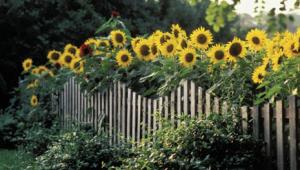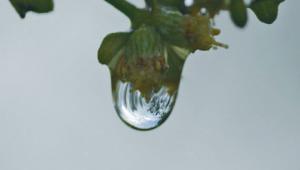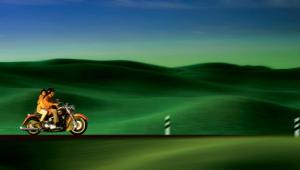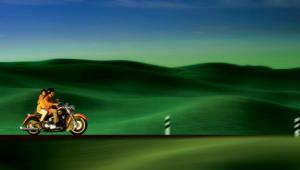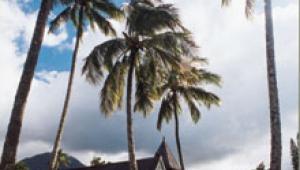Travel Photography Tips Page 3
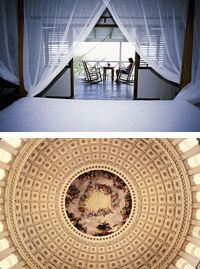 | Inside
There are many good photo opportunities inside those buildings. Often, tripods are prohibited, so it's a good idea to use fast film, and brace the camera against handy objects such as walls or railings (taking care not to inflict any damage). Sometimes a monopod is allowed where a tripod isn't. Color-print film can handle odd lighting better than slide film, since it can be corrected when printed. Digital images can also be corrected in-computer (also experiment with manual white-balance settings when you shoot indoors). Built-in flash units aren't powerful enough to light large areas, and destroy the effect of the ambient lighting, so their use should be reserved for close-up detail shots. Don't forget to make some shots of the hotels, hostels and other places you stay, both as records of same, and as examples of the living quarters in each location. Top photo Ron Leach, bottom Ron Leach |
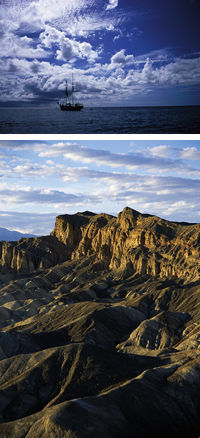 | Landscapes
Often, you're traveling to see the land. National parks and other picturesque sites include many photogenic subjects, most of which have been "done to death." Go ahead and shoot the "postcard" view, but then try to make your vision a little different through camera angle, lens choice, time of day or year, or weather conditions. (Seascapes count, too.) Look for interesting skies, and if the sky is particularly picturesque, position the horizon low in the frame to include lots of sky. If the ground is the interesting segment of the scene (when the sky is hazy dull, for example), just tilt the camera down to crop most of the sky out of frame. A graduated neutral-density filter can cut down the sky's brightness so you can hold detail in both bright sky and darker land. As with pretty much all outdoor photography, the most attractive light for landscapes occurs first thing in the morning and late in the afternoon. Shadows from the low-angle sun are long and dramatic, the light has a pleasant warm cast, and the sun isn't as intense (since its rays have to pass through more of the atmosphere), thus reducing contrast (and allowing people to look toward it without squinting unattractively—late-afternoon sun is great for outdoor portraits, too). Scout good camera locations during the middle of the day, and be ready to shoot when late afternoon comes around, or early the next morning. Top photo Ron Leach, bottom Ron Leach |
 | "Street Scenes"
"Street scenes" are shots that capture the flavor of a location. In cities, they're often literally shot on the street. But they can be shot at the beach, in a park, or anywhere that shows what it's like at the location. In cities, they're often literally shot on the street. But they can be shot at the beach, in a park, or anywhere that shows what it's like at the location. The idea is to capture the flavor of the place and its people. Top photo Ron Leach, bottom Ron Leach |
 | On the Lighter Side
Keep an eye out for special moments—or create them. An unexpected intrusion by an animal, people doing funny things, strange juxtapositions—such are the stuff of fun photos. Keep alert, and ready, and you're likely to capture some on your travels. Such shots add interest to a vacation slide show, and can stand on their own, too. Top photo Nathan Hernandez, bottom Ron Leach |
 | A Different Perspective
If your budget and the circumstances allow, take a flight over the area to get different perspective. Few tourists get aerial photos of their destinations. Or, try to gain access to a tall building, and shoot from atop it, or through a window on a high floor. Alternatively, crouch down and shoot from a low angle. The idea is to get as far from the everyday human-eye-level viewpoint as possible. Top photo Mike Stensvold, bottom Mike Stensvold |
 | Tour Your Own Turf
You don't have to spend big bucks to do travel photos. It's likely that your own area is a travel destination for other people. So why not "play tourist" in your own town? You can check out the popular tourist points of interest, or go out and investigate an area you've never visited. For example, here in Los Angeles, we have a surprising number of hiking trails that get one away from the big city quite quickly. You also probably know neat local spots that tourists miss. Top photo Mike Stensvold, bottom Lynne Eodice |
- Log in or register to post comments







